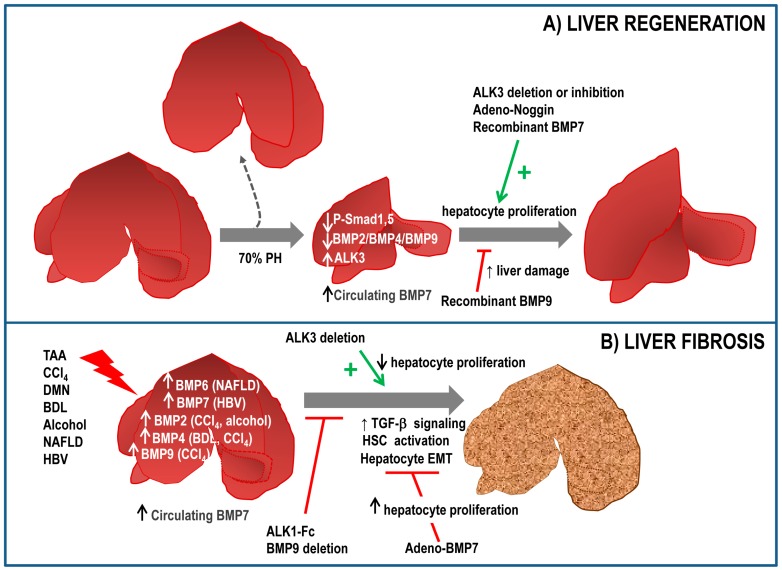Figure 2.
Role of BMP signalling in liver regeneration (A) and liver fibrosis (B). (A) Following a partial hepatectomy (PH), BMP signalling is reduced in liver, with a decreased expression of BMP2, BMP4 and BMP9 and a decrease in phospho-Smad1,5,8 (P-Smad1,5) levels. Different approaches show that BMP7, adenovirus-mediated expression of Noggin or ALK3 (BMP receptor type 1A) deletion/inhibition have a pro-regenerative effect in liver, whereas other BMP ligands such as BMP9, increase liver damage; (B) An upregulation of different BMP ligands has been observed in response to liver insults of different nature, such as bile duct ligation, CCl4 treatment and others. Accumulating data evidence a protective role for BMP7 in the context of liver fibrosis. Inhibition or deletion of BMP9 has a similar antifibrotic effect, while ALK3 inhibition favours liver fibrosis. The role of other BMPs is currently a matter of study. PH: partial hepatectomy; TAA: thioacetamide; DMN: dimethylnitrosamine; BDL: bile duct ligation; NAFLD: Non-Alcoholic Fatty Liver Disease; HBV: hepatitis B virus; EMT: epithelial to mesenchymal transition; HSC: hepatic stellate cells.

